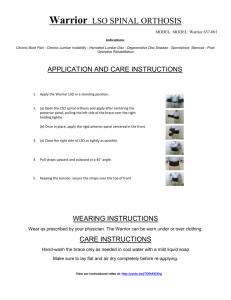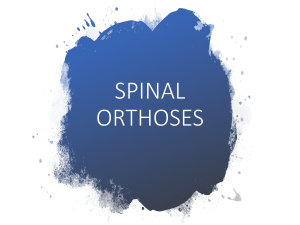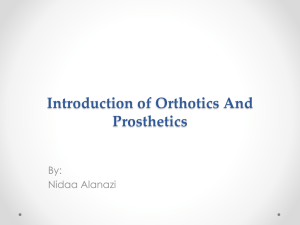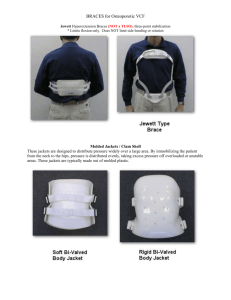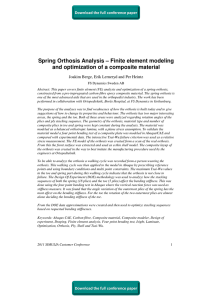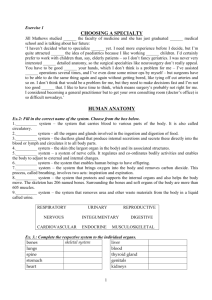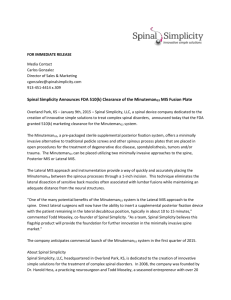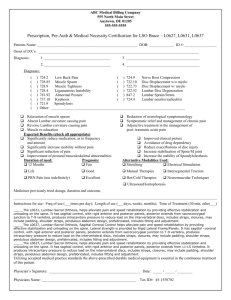LCD based guide for Orthotist`s notes for Custom Fitted Spinal
advertisement
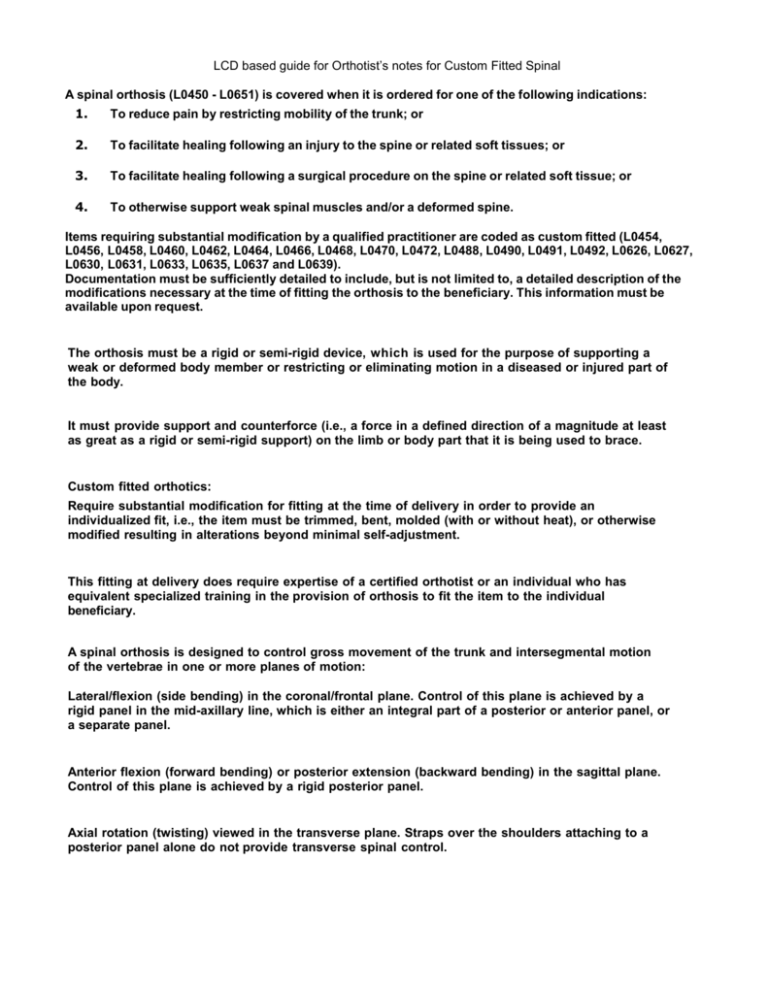
LCD based guide for Orthotist’s notes for Custom Fitted Spinal A spinal orthosis (L0450 - L0651) is covered when it is ordered for one of the following indications: 1. To reduce pain by restricting mobility of the trunk; or 2. To facilitate healing following an injury to the spine or related soft tissues; or 3. To facilitate healing following a surgical procedure on the spine or related soft tissue; or 4. To otherwise support weak spinal muscles and/or a deformed spine. Items requiring substantial modification by a qualified practitioner are coded as custom fitted (L0454, L0456, L0458, L0460, L0462, L0464, L0466, L0468, L0470, L0472, L0488, L0490, L0491, L0492, L0626, L0627, L0630, L0631, L0633, L0635, L0637 and L0639). Documentation must be sufficiently detailed to include, but is not limited to, a detailed description of the modifications necessary at the time of fitting the orthosis to the beneficiary. This information must be available upon request. The orthosis must be a rigid or semi-rigid device, which is used for the purpose of supporting a weak or deformed body member or restricting or eliminating motion in a diseased or injured part of the body. It must provide support and counterforce (i.e., a force in a defined direction of a magnitude at least as great as a rigid or semi-rigid support) on the limb or body part that it is being used to brace. Custom fitted orthotics: Require substantial modification for fitting at the time of delivery in order to provide an individualized fit, i.e., the item must be trimmed, bent, molded (with or without heat), or otherwise modified resulting in alterations beyond minimal self-adjustment. This fitting at delivery does require expertise of a certified orthotist or an individual who has equivalent specialized training in the provision of orthosis to fit the item to the individual beneficiary. A spinal orthosis is designed to control gross movement of the trunk and intersegmental motion of the vertebrae in one or more planes of motion: Lateral/flexion (side bending) in the coronal/frontal plane. Control of this plane is achieved by a rigid panel in the mid-axillary line, which is either an integral part of a posterior or anterior panel, or a separate panel. Anterior flexion (forward bending) or posterior extension (backward bending) in the sagittal plane. Control of this plane is achieved by a rigid posterior panel. Axial rotation (twisting) viewed in the transverse plane. Straps over the shoulders attaching to a posterior panel alone do not provide transverse spinal control.
